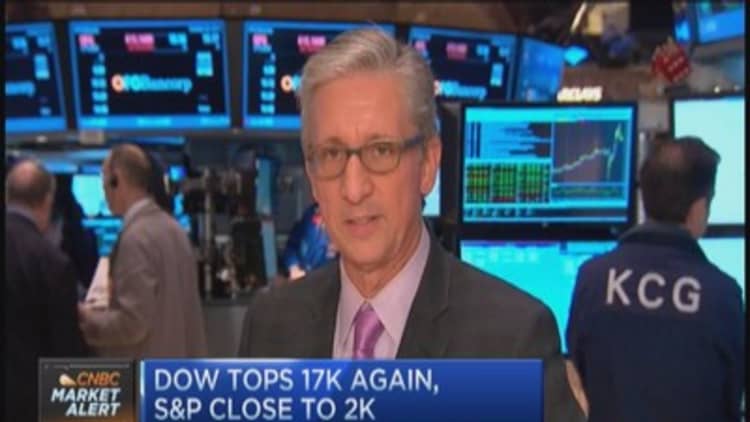
Another tech glitch, this time with the NYSE's Securities Information Processor (SIP), which consolidates quote and trade data for NYSE-listed stocks.
According to a statement from the NYSE, the first glitch occurred at 1:07 PM ET. The SIP went down, which means that the NYSE and the other exchanges---the NASDAQ and BATS--could not exchange information on bids and offers. Simply put, they couldn't talk to each other.
Since options price off of stocks, the glitch also affected trading in options; the Options Price Reporting Authority (OPRA), serves the same function as the SIP for options, consolidating last sale information and option quotes.
At 1:34 PM, the NYSE switched to a backup system in Chicago. Normal processing resumed for quotes at that time, then at 1:37 PM normal processing occurred for trades that had been executed, then at 1:41 PM for options pricing and quoting.
NASDAQ and BATS was able to connect to the backup system shortly thereafter. No word from NYSE as to what caused the glitch, but they are planning to restore normal operation from the main data center tomorrow.
Just to remind everyone: the SIP consolidates quote and trade data for U.S. stocks. There are two SIPs, one operated by the NYSE and the other by the NASDAQ. All the exchanges and market centers that trade NYSE securities have to send their data to a SIP operated by the NYSE for data consolidation; all exchanges and market centers that quote and trade NASDAQ-listed securities also have to provide their data to a SIP that is currently operated by NASDAQ.
One interesting point: the glitch coincided with a blip up in the stock market. The S&P, for example blipped up several points quite suddenly twice in the one o'clock hour.
This may be a coincidence, but it didn't stopped traders from speculating that the glitch may have been a contributing factor. How? The market was in an uptrend when the glitch occurred. It could have happened if: 1) some bought futures to cover themselves when they saw the glitch occur, or 2) someone had a buy order in and because some pulled liquidity from the market but the buy order stayed it caused the market to move up.
Here are two interesting questions:
1) When the SIP was interrupted, how did the indexes price all the stocks that were in the indices? None of the indices were interrupted; what feeds did they use to price the indexes?
2) Why wasn't trading halted? When NASDAQ's SIP went down for several hours last year, trading was halted. It's not clear why there was no halt here. It may be because it was still possible to trade on the NYSE and execute on NYSE, you just couldn't print to the consolidated tape. And all the trading systems worked.
This might be something the SEC may want to weigh in on: at what point should a glitch in the SIP translate into a trading halt?


